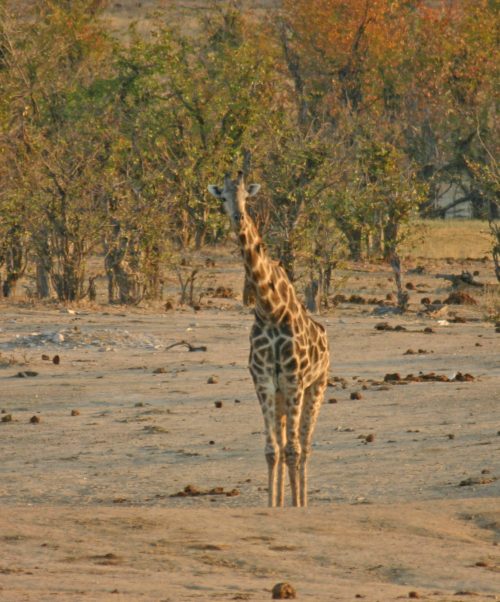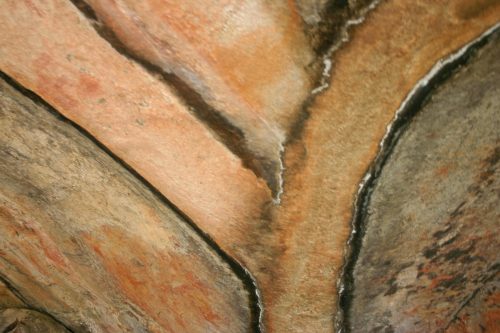The way into our first camp in Hwange was a game drive in itself, where we saw elephants galore, tiny steenbok, elegant sable antelope (photo below), impala, giraffe, squirrel, slender mongoose, warthog, greater blue-eared starling, crimson-breasted shrike, long-tailed shrike, ground hornbill, coquis francolin (like a pheasant), pied babbler and kori bustard (largest flying bird in Africa).



While three of our group sleep in tents, four of us stay in a two-story canvas construction that has a dormitory-style row of beds and a dining table upstairs, and a single room, a common toilet and common shower downstairs. I sleep upstairs with my friends Birthe and Jørn from Denmark. We leave the sidings open day and night.


We have the whole camp to ourselves – and the animals. About 30 metres from our canvas house, there is a concrete trough to provide water for the animals. One night we hear an elephant slurping from the water trough and munching leaves and branches. Hyenas whoop, hoping to snatch a meal somewhere. Lions roar in the distance, marking their territory.
Another night, we also hear a lion roar. At first, the lion is far away, but it comes progressively closer until it is right outside our canvas home, that is, 30 metres away from us. Hearing the mighty roar of a lion this close is very exciting. The sound fills all the space and seems to shake the earth.
Depending on the weather, a lion’s roar can be heard seven kilometres away, so imagine how loud it feels when you are almost right beside it. Wow! All of us in camp are awake; all of us are quiet as mice. We cannot see anything outside, because it is pitch black, so we just enjoy the sound.
After a while, we can hear a huge tongue lapping water from the drinking trough. In fact, it sounds like there are at least two lions drinking. A little while later, they wander farther away and continue their territorial roaring at intervals until they are quite distant from us.
One morning we go on a game drive and the first thing we see are some other lions – a young male and three females. They are very laid back about our presence. The male crosses the road in front of us and lies down under a bush. The females get up, stretch and wander away. The male decides to follow them. What a great way to start the day!

During our final days in the bush we camp in an even more remote area, down by a river.

This means we are now all back to sleeping in our tents, and using the primitive toilet and shower facilities.




We explore the area by car and by foot.


We see black-backed jackal (photo below), warthogs, elephant, waterbuck, slender mongoose, terrapin (a turtle species), hippo, crocodile, and several bird species including fish eagle, black-crowned night heron and yellow-tailed stork.

On one of our walks, we flush out an African wildcat just in front of us. That is the first time I have ever seen one. It looks just like an orange, green-eyed domestic pussycat, but in a grumpy Garfield kind of way. In fact, this is the feline species that our domestic cats originate from.



At one point, our guides leave us behind for about an hour on strict orders to stay put and not wander around on our own. We while away the time with an impromptu game of elephant dung football. The game is over when the dung ball disintegrates.
On our last safari evening, the group goes on a lengthy drive to a waterhole, but I elect to stay back in camp and enjoy the solitude. As darkness falls, I hear a hyena whooping close by. I am not scared, but I am also not foolhardy. I do not have a weapon, I am alone, and hyenas are always hungry. Their powerful jaws can easily crush bones in one bite. So I retreat into my tent until I hear the sound of our jeep returning about an hour later. By this time, the only light is from a bright, waxing half moon.
We exchange stories about our evening away from each other, eat and go to be early, in readiness to break camp the following morning and to say goodbye to the fascinating African bush.








